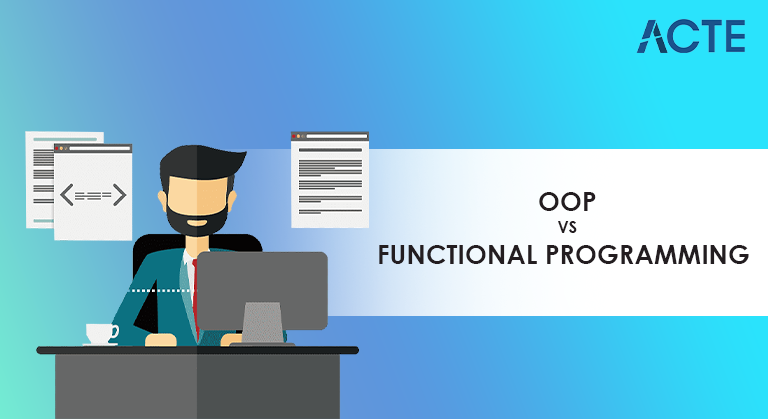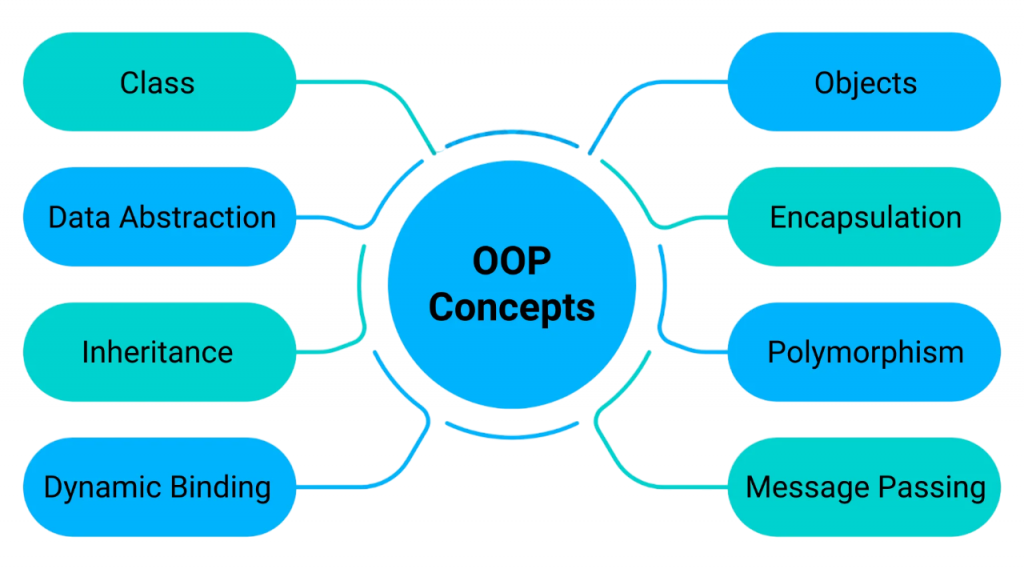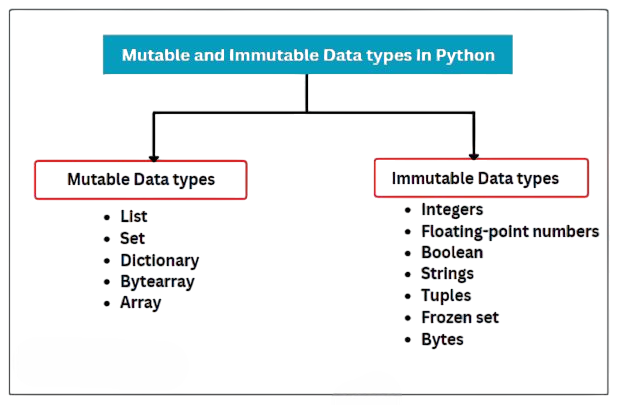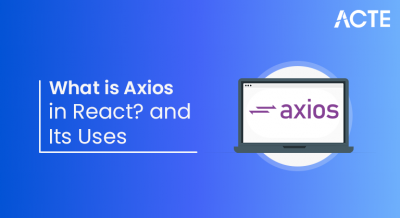
- Programming Paradigms
- Core Principles of Functional Programming
- Core Concepts of Object-Oriented Programming (OOP)
- Data and State Management in Both Paradigms
- Function vs Object-Based Structure
- Code Reusability and Modularity
- Immutability vs Mutability
- Popular Languages That Support Each Paradigm
- Real-World Use Case Examples
- Performance and Scalability Considerations
- Learning Curve and Developer Preference
- Choosing the Right Approach for the Problem
Programming Paradigms
Programming paradigms define the methodology and style used to write software. They influence how problems are approached and solutions are implemented. Among the many paradigms available, Functional Programming (FP) and Object-Oriented Programming (OOP) are two of Java Training is the most popular and widely adopted. Both have their strengths and weaknesses and are suitable for different types of development needs.of problems and project requirements.Functional programming focuses on pure functions and immutability, emphasizing what should be done rather than how to do it. OOP, in contrast, models software around real-world objects, focusing on data and behavior encapsulated together. Developers can select the appropriate tools for various situations by having a solid understanding of these programming paradigms. These programming paradigms’ advantages in areas like application design, scalability, and maintainability are revealed by comparison.
To Earn Your Java Training Certification, Gain Insights From Leading Web Developer Experts And Advance Your Career With ACTE’s Java Training Today!
Core Principles of Functional Programming
Functional programming is a declarative style of programming that treats computation as the evaluation of mathematical functions. Its foundation lies in lambda calculus and mathematical reasoning. The core principles include immutability, pure functions, and higher-order functions. To apply these principles practically and strengthen your coding foundation, explore Java Projects for Beginner a curated set of hands-on exercises that blend object-oriented and functional techniques to help new developers build real-world applications with confidence.
- Pure Functions: Functions that always return the same result for the same input and have no side effects.
- Immutability: Variables and data structures are immutable, meaning once a value is assigned, it cannot be changed.
- First-Class Functions: Functions are treated like variables and can be passed as arguments, returned by other functions, or assigned to variables.
- Higher-Order Functions: Functions that take other functions as parameters or return them.
- Referential Transparency: An expression can be replaced by its value without changing the behavior of the program.
- Recursion: Recursion is used instead of iterative loops for repetitive tasks.
- Encapsulation: Binding data and methods into a single unit (object) and restricting direct access to some of the object’s components.
- Inheritance: Creating new classes from existing ones to promote code reuse.
- Polymorphism: The ability to use a single interface for different data types or methods, such as utilizing PDO in PHP to interact with multiple types of databases through a consistent and unified interface.
- Abstraction: Hiding complex implementation details and exposing only the necessary features.
- Functional programming reduces side effects and makes programs easier to understand by using pure functions and immutable data.
- OOP, on the other hand, allows for more intuitive Data and State Management in complicated systems by managing data through objects that contain state and behavior.
- It organizes code into classes and objects that encapsulate state and behavior.
- This makes it easier to model complex systems by representing real-world entities and their interactions.
- Functional Programming achieves modularity through pure, independent functions. Each function performs a specific task and can be reused in different contexts.
- OOP promotes code reuse via class inheritance and polymorphism. Base classes define common behavior, and derived classes extend or override that behavior.
- Immutable data structures ensure that once data is created, it cannot be changed.
- Instead, new data is derived through transformations. This leads to more predictable code and helps avoid side effects.
- Haskell : A pure functional language used in academia and critical systems.
- Scala : Supports both OOP and FP; popular in big data (e.g., Apache Spark).
- Clojure: Functional language for the JVM.
- Erlang: Known for telecom applications requiring high concurrency.
- Elixir: Built on Erlang VM; great for scalable web applications.
- JavaScript: While primarily imperative, supports functional patterns with functions like map, filter, and reduce, similar to how a Python Developer Roles and Responsibilities might involve using functional programming techniques in Python.
- Java: Enterprise-grade language built on OOP principles.
- C++: Offers OOP along with low-level memory management.
- Python: Multi-paradigm but commonly used for OOP.
- Ruby: Everything is an object; ideal for OOP enthusiasts.
- C#: Strongly OOP, with modern features like LINQ and functional extensions.
- Banking Systems: Functional languages like Haskell ensure predictability and correctness.
- Concurrency-Heavy Applications: Erlang is used in telecom networks where uptime is critical.
- Front-End Development: React.js uses functional concepts like component purity and unidirectional data flow.
- Enterprise Applications: Java is used to build banking, CRM, and ERP systems, much like how Pattern Programming in C can be used to design efficient and scalable solutions for complex enterprise applications, leveraging design patterns to solve recurring problems in system architecture.
- Mobile Applications: Android development in Java/Kotlin and iOS development in Swift use OOP principles for UI components and logic.
- Advanced optimizations like tail call optimization (TCO) and lazy evaluation are employed to mitigate this.
- OOP’s performance depends on the design. Poorly designed class hierarchies can lead to bloated and inefficient code.
- Educational background
- Prior experience
- Nature of projects
- Team preferences and company standards
- Your application requires high concurrency.
- You prioritize code purity and predictability.
- Your team is well-versed in functional principles.
- You are building systems with complex data transformations (e.g., compilers, data pipelines).
- Your application involves real-world entities and behavior modeling.
- You need encapsulation and hierarchical structures.
- You’re working on large-scale, enterprise-grade applications.
Languages that support functional programming include Haskell, Clojure, Scala, Erlang, and Elixir. Many modern languages like JavaScript, Python, and even Java also support functional programming features.
Core Concepts of Object-Oriented Programming (OOP)
Object-oriented programming is centered around the concept of objects, which are instances of classes. Each object contains attributes (data) and methods (behavior). The core concepts of OOP are:

Languages that support OOP include Java, C++, Python, Ruby, and C#. These languages allow developers to model real-world entities and relationships, making software design more intuitive and scalable.
Data and State Management in Both Paradigms
In functional programming, data is treated as immutable. Any transformation or update to data results in the creation of a new data structure. This eliminates side effects, making code easier to test, debug, and parallelize. State changes in functional programming are handled through function arguments and return values, without modifying external or global state. Their approaches to data and state management represent a significant difference. To explore how Java supports both paradigms and helps developers write robust, scalable applications, check out Java Training a hands-on program that covers object-oriented principles, functional constructs, and best practices for modern Java development.
Depending on the use case and project requirements, each paradigm has special benefits. Improper state management in OOP can lead to bugs that are difficult to trace.Managing mutable state requires careful design, especially in multithreaded or distributed systems. Tools like locks and synchronization mechanisms are often used to prevent data inconsistency.
Function vs Object-Based Structure
Functional programming uses a function-centric structure. Programs are built by composing small, pure functions that transform input data into output data. These functions can be easily reused, tested, and reasoned about independently. OOP uses an object-centric structure, where state and behavior are encapsulated within objects. To practice both styles and strengthen your understanding of control flow, loops, and logic, explore Java Pattern Programs a hands-on collection of beginner-friendly exercises that reinforce programming fundamentals through visual output and structured problem-solving.
For instance, in FP, a shopping cart might be represented as a list of items and manipulated using functions like addItem(cart, item) and removeItem(cart, item). In OOP, a Cart class might have addItem() and removeItem() methods that directly modify the internal state of the cart object.
Would You Like to Know More About Java Training? Sign Up For Our Java Training Now!
Code Reusability and Modularity
Both paradigms aim to promote reusability and modularity, but their methods differ: functional programming relies on pure functions and composition, while object-oriented programming organizes logic around encapsulated objects and state. To understand how control structures operate within these paradigms, explore Switch Case in Java a practical guide that demonstrates how conditional branching works in Java, helping developers write cleaner, more maintainable code across both functional and object-oriented styles.
In functional programming, composition is favored small functions are combined to form more complex logic.Although both paradigms encourage code reusability and modularity, they take distinct approaches to putting these ideas into practice. While Functional Programming depends on higher-order functions and decomposable logic, OOP uses class hierarchies and object composition to accomplish Code Reusability and Modularity. In OOP, inheritance and aggregation are common tools to build hierarchies and relationships among objects.
Immutability vs Mutability
Immutability is a fundamental concept in functional programming. Instead of modifying existing data, transformations produce new values making code more predictable and thread-safe. To see how this principle applies in practice, explore Reverse a String in Java a simple yet powerful exercise that demonstrates how immutable logic can be used to manipulate strings without altering original data structures.

In OOP, objects often hold mutable state. The internal state of an object can change over time through method calls. This flexibility can be powerful but also increases the complexity of managing state and debugging bugs caused by unintended changes.Immutability can be enforced in OOP languages using final (Java), readonly (C#), or custom getter/setter patterns. However, it is not the default behavior.
Popular Languages That Support Each Paradigm.
Functional Programming Languages:
OOP Languages:
Many languages today are multi-paradigm, supporting both OOP and functional features to accommodate various programming styles.
Real-World Use Case Examples
Functional Programming Examples:
Object-Oriented Programming Examples:
Are You Interested in Learning More About Java Training? Sign Up For Our Java Training Today!
Performance and Scalability Considerations
Functional programming can outperform OOP in highly concurrent systems due to immutability and stateless functions. It avoids the pitfalls of shared state and side effects, allowing safer parallelism and distributed processing. However, performance bottlenecks may arise due to excessive memory usage, recursion overhead, and creation of new data structures. To explore how string operations behave in such contexts, especially when working with immutable data, check out Substring in Java a concise guide that demonstrates how to extract parts of a string efficiently while adhering to functional principles.
On the other hand, OOP shines in large, complex systems where objects map closely to domain models, improving maintainability and comprehension.
Learning Curve and Developer Preference
Functional Programming has a steeper learning curve, especially for developers coming from imperative or OOP backgrounds. Concepts like higher-order functions, closures, and monads can be hard to grasp initially. However, FP teaches strong programming discipline and improves code quality. OOP is often more intuitive for beginners due to its alignment with real-world thinking. Most introductory programming courses teach OOP using languages like Java and Python. The widespread use of OOP in industry also means more tutorials, community support, and job opportunities. To bridge both paradigms and write cleaner, more expressive Java code, explore Lambda Expression in Java a practical guide that introduces functional constructs in Java, including syntax, use cases, and how lambdas simplify event handling and data processing.
Developer preference often depends on:
Preparing for Java Job Interviews? Have a Look at Our Blog on Java Training Interview Questions and Answers To Ace Your Interview!
Choosing the Right Approach for the Problem
Choosing between functional programming and object-oriented programming is not about selecting the superior paradigm it’s about selecting the right tool for the job. Each paradigm excels under specific conditions. To understand how Java supports both styles and helps developers apply the right paradigm based on context, explore Java Training a practical training guide that covers Java’s dual capabilities, real-world use cases, and best practices for writing clean, scalable code.
Choose Functional Programming if:
Choose Object-Oriented Programming if:
In practice, many modern development environments leverage a hybrid approach combining FP and OOP for optimal results. For instance, using immutable data structures in an OOP framework or applying functional patterns in an object-oriented codebase. Mastering both paradigms enables developers to be more versatile and effective. It broadens their problem-solving toolkit and empowers them to write scalable, maintainable, and robust software regardless of the project requirements.



